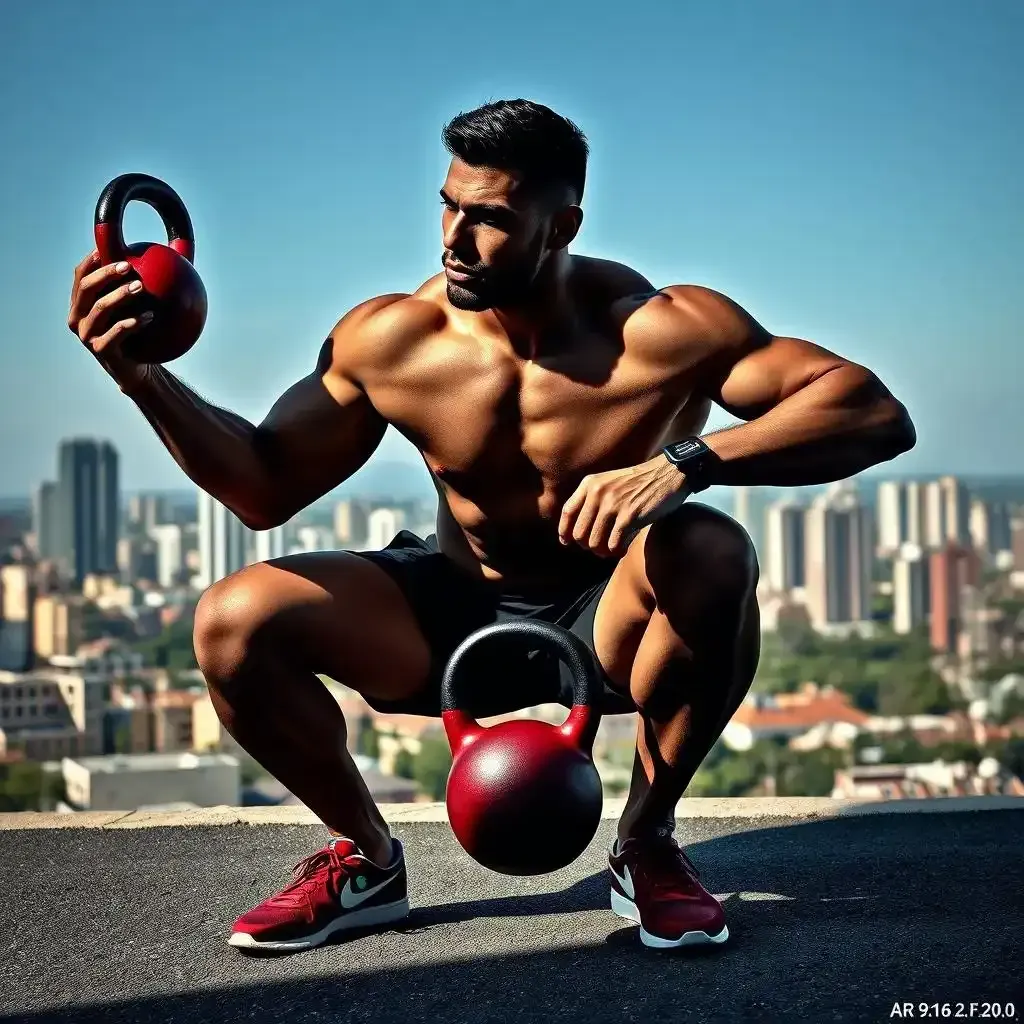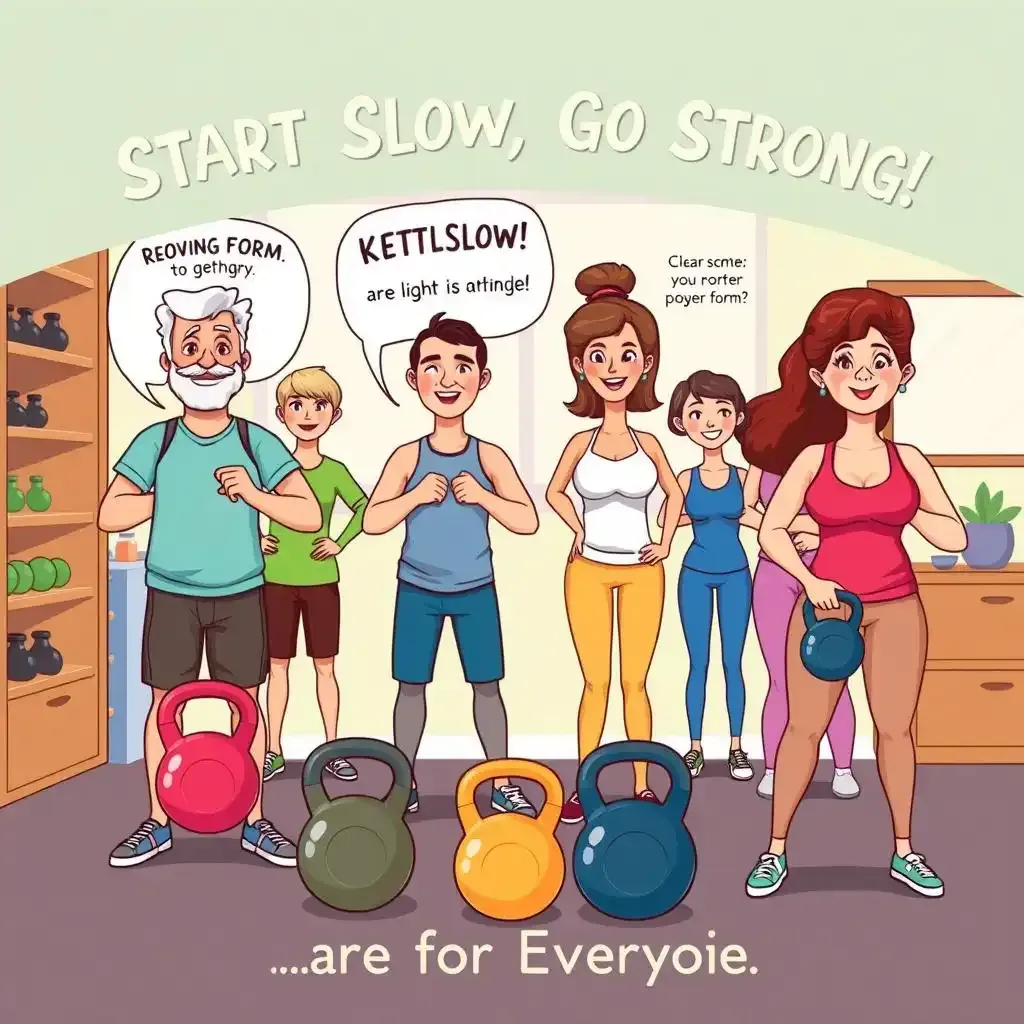Table of Contents
So, you're curious about kettlebells? Smart move! They're amazing tools for getting stronger, fitter, and more toned. But the internet is a wild west of fitness advice, and sadly, a lot of what you read about kettlebells is just plain wrong. This article, from kettlebellworkout.homes, aims to clear up the confusion. We'll tackle some common kettlebell workout myths, separating fact from fiction. Get ready to ditch the outdated ideas and access your kettlebell potential. We'll cover everything from whether kettlebells are just for experienced athletes to whether they're truly effective for building muscle. By the end, you'll not only be able to spot a kettlebell myth a mile away, but you'll also have a solid understanding of how to use these awesome tools to achieve your fitness goals. Let's get started!
Kettlebell Workout Myths: Separating Fact from Fiction

Kettlebell Workout Myths Separating Fact From Fiction
Let's start by tackling some of the biggest kettlebell workout myths out there. These myths can really hold you back, so it's important to get the facts straight. Here are some of the most common ones:
- Kettlebells are only for functional training and not for hypertrophy.
- Kettlebells are not effective for building strength.
- Kettlebells are only for lower body exercises.
- Kettlebells are not suitable for beginners.
- Kettlebells are only for explosive training.
First up, let's talk about the myth that kettlebells are only for functional training and not for hypertrophy. This one really gets under my skin. Kettlebells are incredibly versatile and can definitely help you build muscle. Joe Daniels, a fitness expert, discussed this on The BarBend Podcast. He pointed out that kettlebells can be used for hypertrophy training, just like dumbbells or barbells. It all comes down to how you use them and the exercises you choose. For example, kettlebell swings, goblet squats, and clean and presses can all be fantastic for building muscle size and strength.
Myth | Reality |
|---|---|
Kettlebells are only for functional training. | Kettlebells can be used for hypertrophy, strength, and more. |
Kettlebells are not effective for building strength. | Kettlebells increase functional strength due to their unbalanced design. |
Kettlebells are only for lower body exercises. | Kettlebells can be used for a variety of exercises targeting different muscle groups. |
Kettlebells are not suitable for beginners. | Kettlebells can be used by beginners safely and effectively. |
Kettlebells are only for explosive training. | Kettlebells can be used for a variety of training styles, including circuits and strength training. |
Smashing Kettlebell Myths: Strength, Size, and Skill

Smashing Kettlebell Myths Strength Size And Skill
Myth 1: Kettlebells are ONLY for Cardio
Okay, let's get one thing straight: I've seen some seriously ripped people using kettlebells! The idea that kettlebells are *just* for cardio is completely bananas. Sure, kettlebell swings get your heart pumping like crazy – they're a fantastic way to improve your cardiovascular fitness. But that's not all they do. Think of kettlebells as super-powered dumbbells with extra attitude. They challenge your muscles in ways regular dumbbells just can't. You'll build serious strength and muscle, trust me. I've seen firsthand how kettlebell exercises like the Turkish get-up, goblet squats, and even simple presses can sculpt your muscles and boost your overall strength. Don't believe the hype; kettlebells are a total body workout, not just a cardio blast! For more amazing kettlebell exercises, check out our kettlebell exercises guide for beginners.
Exercise | Muscle Groups Worked |
|---|---|
Kettlebell Swing | Glutes, Hamstrings, Core |
Goblet Squat | Quads, Glutes, Hamstrings, Core |
Kettlebell Press | Shoulders, Triceps, Core |
Myth 2: You Need to Be a Gymnast to Use Kettlebells
Another silly myth! You don't need to be a super-athlete to use kettlebells. In fact, they're perfect for people of all fitness levels. Start with lighter weights, focus on proper form (there are tons of resources online!), and gradually increase the weight as you get stronger. It's like learning to ride a bike – you start slow and steady, then you're zooming around! Remember, consistency is key. Don't try to lift too much too soon; that's a recipe for injury. I've seen people start with a 10-pound kettlebell and progress to 50 pounds over several months. It's all about building a solid foundation and listening to your body. For some great beginner tips, check out our helpful guide on kettlebell workouts for beginners.
- Start with lighter weights.
- Focus on proper form.
- Increase weight gradually.
- Listen to your body.
Kettlebell Myths for Beginners: Getting Started Safely and Effectively

Kettlebell Myths For Beginners Getting Started Safely And Effectively
So, you're thinking about trying kettlebells? Awesome! But let's ditch those scary myths right now. I used to think kettlebells were only for super-strong athletes, like some kind of exclusive club. Turns out, that's totally bogus. It's like believing you need to be a rockstar before you can pick up a guitar – ridiculous! Kettlebells are for *everyone* who wants to get stronger, more toned, and have some serious fun. Seriously, they're a blast!
One of the biggest myths I hear is that kettlebells are too dangerous for beginners. Nope! The key is starting slow and focusing on proper form. Think of it like learning to ride a bike – you wouldn't jump on a super-fast bike on your first try, would you? You'd start with a smaller bike, maybe even training wheels, and practice, practice, practice. It’s the same with kettlebells. Begin with lighter weights, maybe even just a few pounds, and concentrate on mastering the basic movements. There are loads of great beginner videos online, and you can even check out our kettlebell basics guide for a step-by-step approach. Trust me, proper form is way more important than heavy weight – especially when you're starting out.
Step | Action |
|---|---|
1 | Start with a light kettlebell (5-10 lbs). |
2 | Focus on perfect form. Watch videos! |
3 | Gradually increase weight. Don't rush it! |
Another misconception is that you need a fancy gym to use kettlebells. Wrong again! You can totally get a killer workout at home. All you need is a kettlebell (or two!), a little space, and a positive attitude. I’ve even seen people use soup cans as makeshift kettlebells when they were just starting out! It's all about finding what works for you. Check out our guide to kettlebell exercises for your home, and you'll see how easy it is to create your own amazing workout space. So, get ready to free your inner fitness warrior!
Don't let fear hold you back. Kettlebells are an amazing tool, and starting slowly and correctly ensures you'll avoid injuries and have a blast. Remember – it's a marathon, not a sprint! Take your time, listen to your body, and enjoy the process. And if you need extra motivation, check out our for some great ideas to get you started. Remember to always prioritize proper form, safety, and a steady progression.
- Find a workout space you like.
- Start light and focus on proper form.
- Don't be afraid to ask for help!
Advanced Kettlebell Myths: Mastering Technique and Progression

Advanced Kettlebell Myths Mastering Technique And Progression
Okay, so you've conquered the basics. You're swinging like a pro (well, almost!), your goblet squats are smooth, and you're feeling pretty confident with your kettlebell skills. But now you're hearing whispers – myths, even! – about the advanced stuff. Let's tackle those head-on, shall we? One biggie is that you need years of experience before tackling more complex moves like the Turkish get-up or the snatch. That's just plain wrong. It's all about building a solid foundation first. Think of it like climbing a mountain – you wouldn't try to summit Everest without mastering basic hiking skills, right? Start with the fundamentals, focus on perfect form (check out our kettlebell form guide for extra help!), and gradually introduce more challenging exercises as your strength and skill improve. Don't rush it! I've seen many people get injured trying to do advanced moves before they were ready. It's much smarter – and safer – to build a strong base before you move on. Remember, consistency and patience are your best friends on this fitness process.
- Master the basics first (swings, squats, presses).
- Focus on perfect form before increasing weight or complexity.
- Gradually introduce advanced movements.
Another myth is that you need specialized equipment or a fancy gym to progress. Completely false! I've personally seen people use park benches, sturdy chairs, and even stacks of books to modify exercises and make them more challenging. Get creative! The beauty of kettlebells is their versatility. You can adapt them to almost any environment, from your living room to a park. And don't forget that your body weight is an amazing tool too! Incorporating bodyweight exercises into your routine can significantly enhance your kettlebell training. For example, adding push-ups or planks to your kettlebell workout not only helps you build strength but also improves your balance and coordination, making those kettlebell movements even more effective. For more creative ideas, browse our page.
Exercise | Modification | Benefit |
|---|---|---|
Kettlebell Swings | Add a jump | Increased explosiveness |
Goblet Squats | One-leg squats | Improved balance and strength |
Kettlebell Press | Press to overhead while standing on a balance board | Increased core activation and stability |
Finally, remember that progression isn't just about lifting heavier weights. It's also about increasing reps, sets, or even trying different variations of exercises. Think of it like learning a new song on the guitar – you start with the basic chords, then you add more complex riffs and solos over time. The same applies to kettlebells. Don't just focus on weight; challenge yourself by adding more reps, sets, or by trying different tempos or variations of your favorite exercises. You might be surprised at how much more you can get out of your workouts. And remember, always listen to your body. If something feels wrong, stop and rest. It's better to take a break than to push yourself too hard and risk injury. For some fantastic advanced routines, check out our advanced kettlebell routines!
Remember, consistency, patience, and a focus on proper form are more important than trying to lift the heaviest weight possible. Advanced kettlebell training is a progression, not a race! So keep practicing, keep challenging yourself, and most importantly, keep having fun!
Remember to always prioritize safety and proper technique. Don't hesitate to consult with a qualified fitness professional for personalized advice if needed. And remember to always listen to your body – it's the ultimate guide to effective training.
Final Thought
The world of kettlebell training is vast and exciting. Don't let myths hold you back from exploring its many benefits. Remember to prioritize proper form, listen to your body, and gradually increase the challenge. With patience and the right information, you can safely and effectively incorporate kettlebells into your fitness routine and achieve fantastic results. Happy lifting!